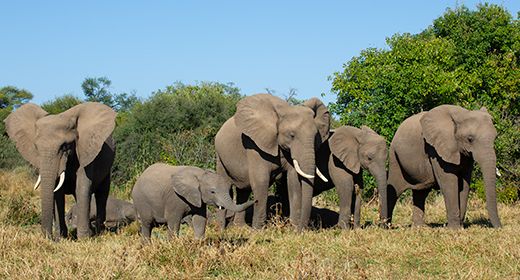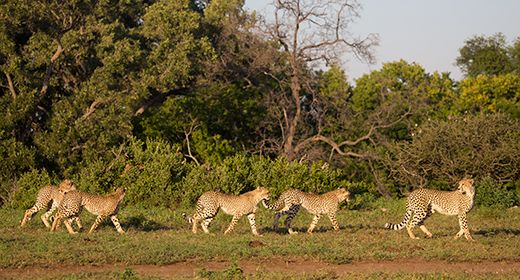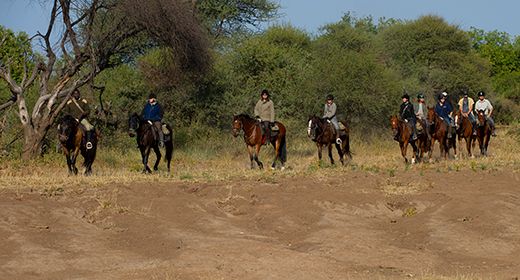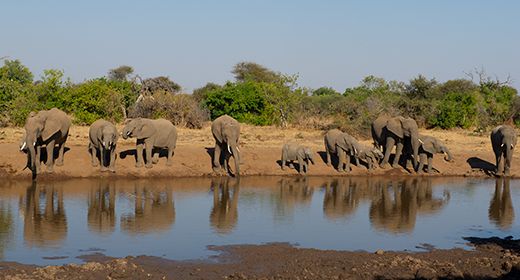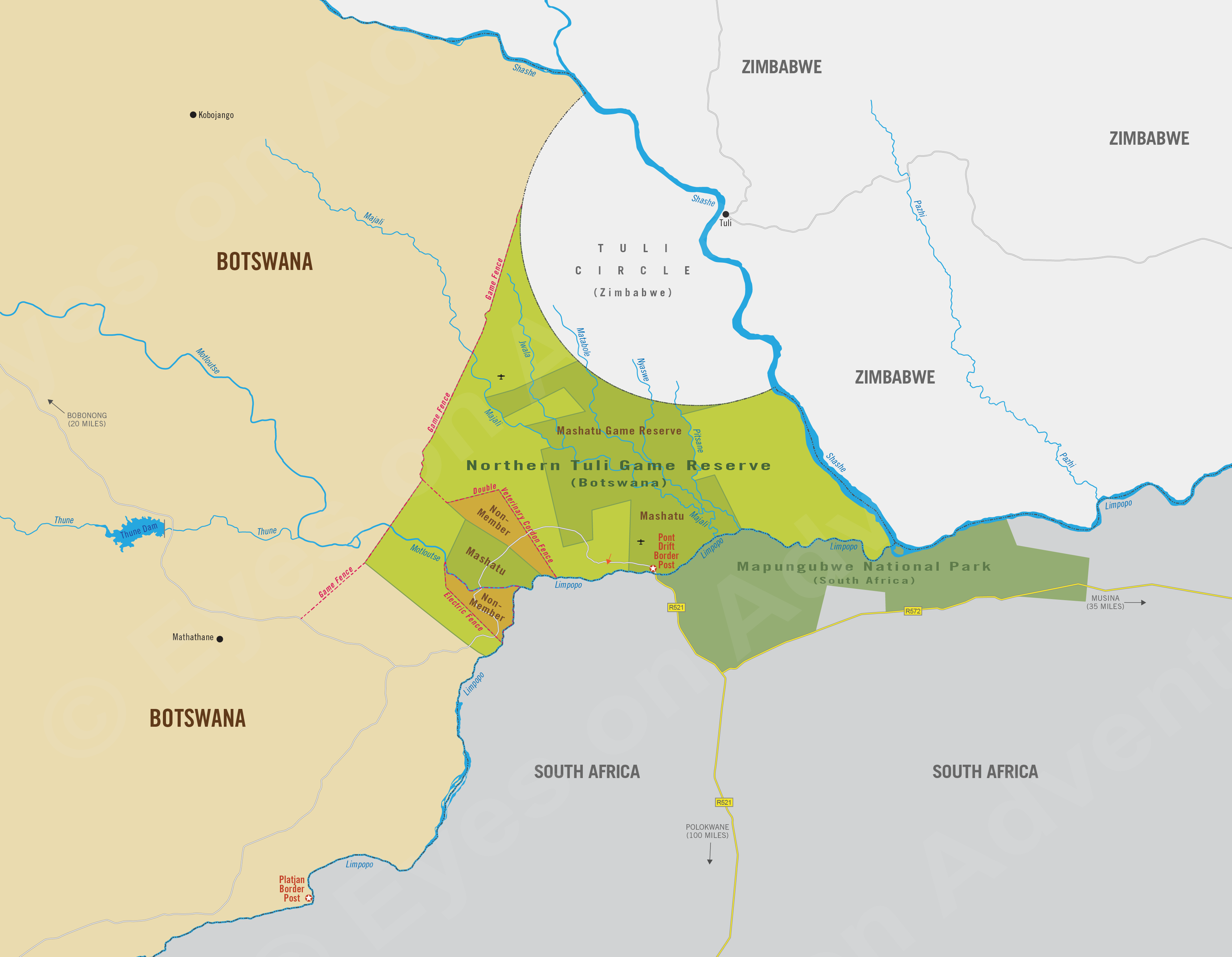Tuli Block
(incl. Mashatu Game Reserve, Northern Tuli Game Reserve)
Region Links: Central Kalahari, Linyanti & Chobe, Makgadikgadi, Okavango Delta, Okavango Panhandle, Tuli Block
Highlights
- Botswana's best-kept 'safari secret' - far from any crowds
- One of the most reliable places to see cheetah in Botswana
- Largest population of elephants on private land in Africa
- Explore the region on a horseback safari - a true adventure
- One of Botswana's best conservation-minded destinations
EOA Recommends: Mashatu Main Camp, Mashatu Tent Camp, Tuli Safari Lodge
The Tuli Block (or Tuli Enclave) is Botswana's best kept safari secret. Tuli is located far from Botswana's popular northern reserves in a small finger of land in the southeast of the country, bordering South Africa and Zimbabwe.
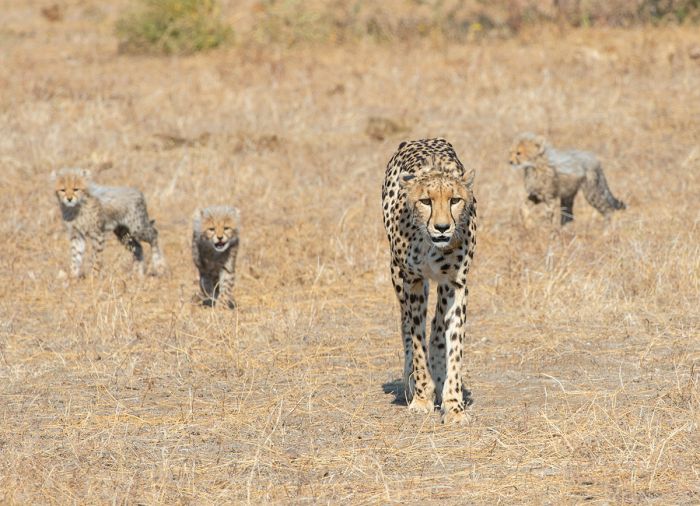
Cheetah with her cubs in Northern Tuli (Copyright © James Weis)
Within the greater Tuli Region, the Northern Tuli Game Reserve covers 281 square miles (728 sq kms) of protected safari land, offering several excellent safari lodges and easy access from South Africa.
Game viewing in the Northern Tuli Reserve is superb, with around 600 elephants in the region, a high density for such a small area. The multiple rivers and rocky habitat provides optimal environment for leopard and there are good numbers of lion, cheetah and African wild dog. Other wildlife includes giraffe, kudu, waterbuck and more.
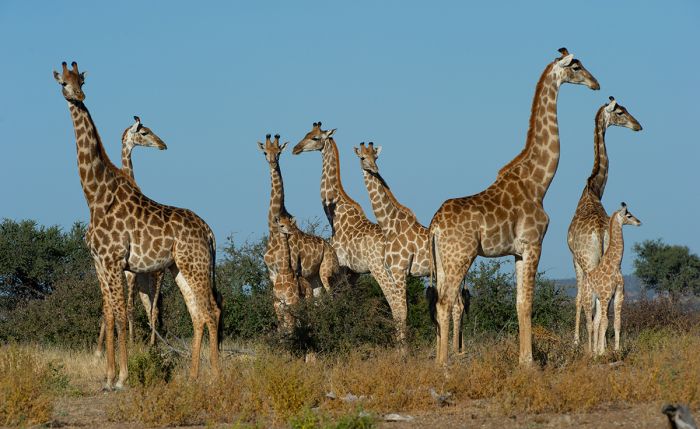
Giraffes in the Northern Tuli Game Reserve (Copyright © James Weis)
The Northern Tuli Reserve is part of the Greater Mapungubwe Transfrontier Conservation Area, which encompasses land in Botswana, Zimbabwe and South Africa and allows the free movement of wildlife between the three countries.
The Tuli Region is certainly one of the most naturally beautiful areas in Southern Africa with its red soils, rocky outcrops and rolling hillsides.
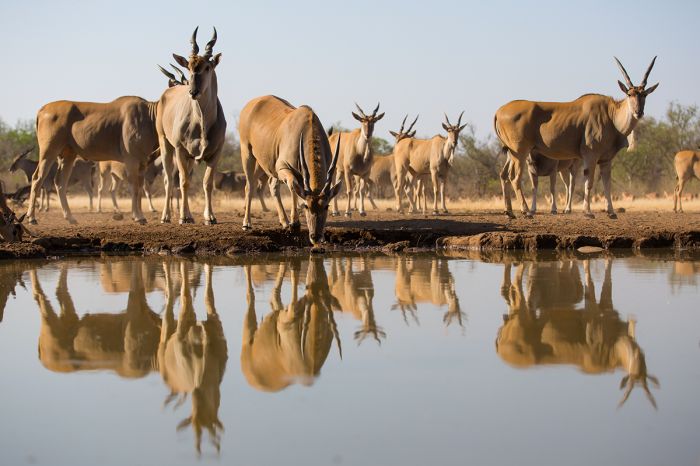
Elands in Northern Tuli Game Reserve
Horseback safaris are a speciality in Tuli and this activity, plus different species such as klipspringer antelope mean that safaris here are quite different to those in other parts of Botswana.
Read More...
History, Horseback Safaris, Mashatu, Northern Tuli Game Reserve, Tuli Block, Tuli Circle, Wildlife
Tuli Block
The Tuli Block (sometimes called the Tuli Enclave) is a narrow strip of land formed at the confluence of the Shashe and Limpopo rivers where Botswana, Zimbabwe and South Africa meet. The land in Tuli is primarily privately owned 'game farms' that have moved from hunting to photographic tourism. The eastern side of Tuli has been declared a wildlife reserve known as the Northern Tuli Game Reserve.
Geographically, the Tuli Region is quite different to most of Botswana, with rocky outcrops and red sand that is littered with stones and pebbles of all sizes.
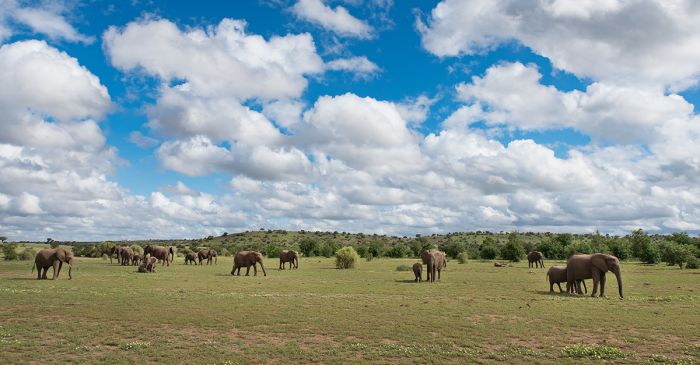
Elephants in Northern Tuli Game Reserve
History
The Tuli region has had human settlement going back to before 800 AD and archaeological studies suggest intense pastoralism from 900 AD into the 1800s. Beginning in the late 1880s, a large scale influx of European settlers moved into Tuli with periodic attempts at cattle farming. Large predators, especially lions, were severely persecuted during this time and for decades thereafter.
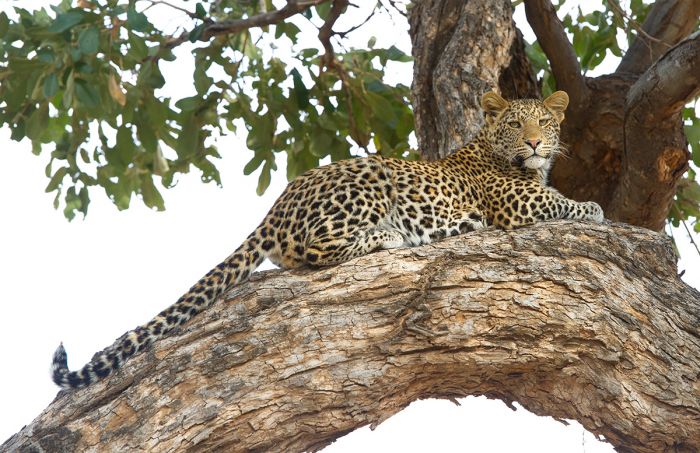
A leopard relaxing in a tree in Mashatu Game Reserve (Copyright © James Weis)
In 1885, Chief Khama III of Bechuanaland (Botswana) agreed to have his lands become a British Protectorate with the intention of gaining protection from incursions by the South African Boer farmers in and around the Tuli region. Ten years later, Khama III ceded the land to Cecil Rhodes' British South Africa Company (BSAC) as further protection.
Rhodes intended to build a portion of his Cape to Cairo Railway through the Tuli, but later determined that Tuli's rocky terrain combined with multiple rivers and gorges made it unsuitable for the routing. The eventual route lies to the west of Tuli over flat land.
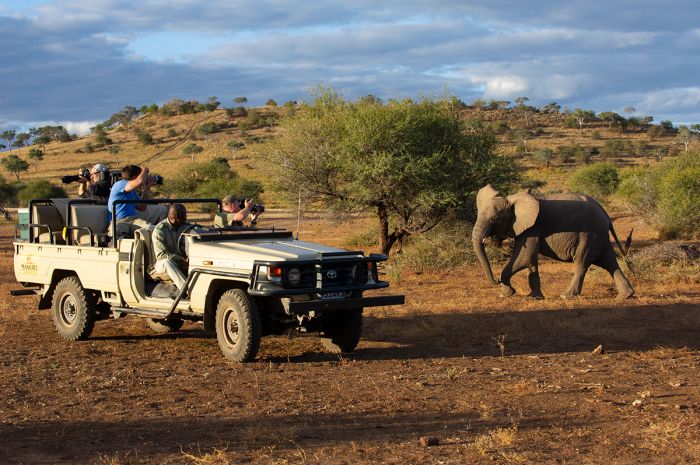
Game drive at Mashatu (Copyright © James Weis)
Exploration for gold turned up nothing and the inhospitable land was not very good for livestock, so Rhodes sold the land off to private farmers a decade later. These farmers also found the land unsuitable for anything but sparse grazing of livestock and so wildlife tourism eventually became the most logical use for the land.
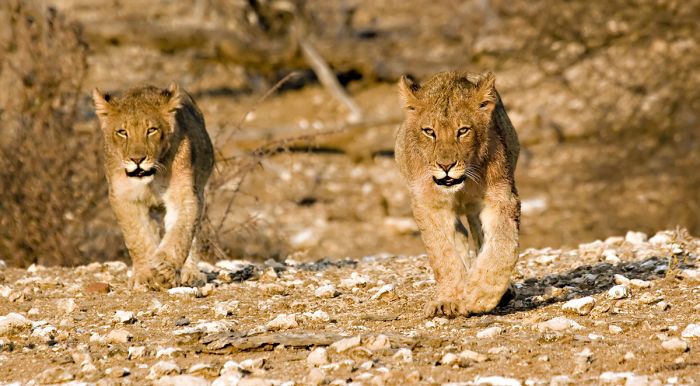
Young lions in Northern Tuli
The Tuli Circle
The 10-mile radius Tuli 'circle' was originally established by agreement between farmer landowners and local tribesmen as a 'no-go area' for cattle grazing. The intention was to help prevent the spread of rinderpest (an infectious viral disease) from local cattle to oxen that were much needed for pioneering treks north.
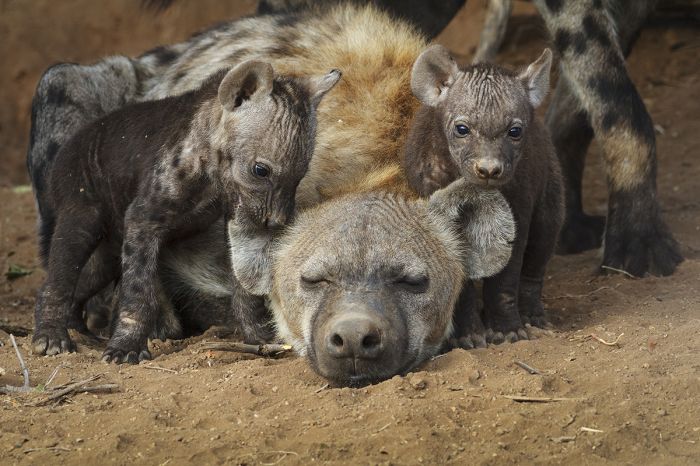
Spotted hyenas in the Northern Tuli Reserve
This circle of land effectively moved the international border separating Botswana and Zimbabwe westward away from the Shashe River, with Zimbabwe gaining ownership of the land inside the circle.
The land within the Tuli Circle is protected within Zimbabwe's Thuli Parks and Wildlife Land and is also a part of the Greater Mapungubwe Transfrontier Conservation Area.
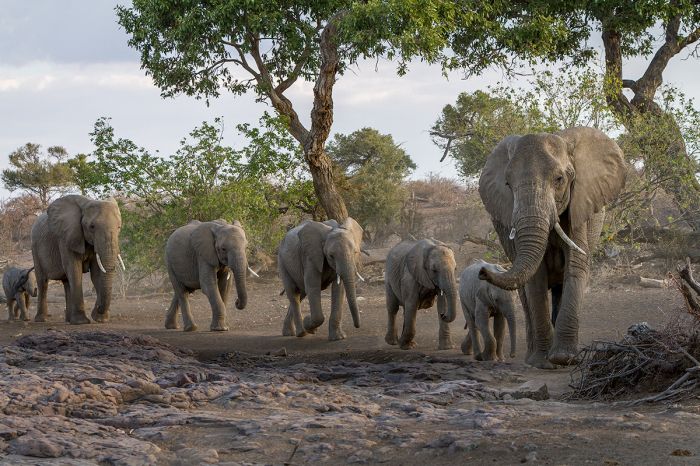
Elephants in the Tuli Block, Botswana
Northern Tuli Game Reserve
The Northern Tuli Reserve is comprised entirely of privately owned land. In 1964, some of the landowners banded together to create a wildlife sanctuary and the Limpopo Game Protection Association was formed, with most farming and hunting ceasing. Unfortunately, by this time, much of the area's wildlife had been drastically reduced in number and most of the large predators were extinct within Tuli.
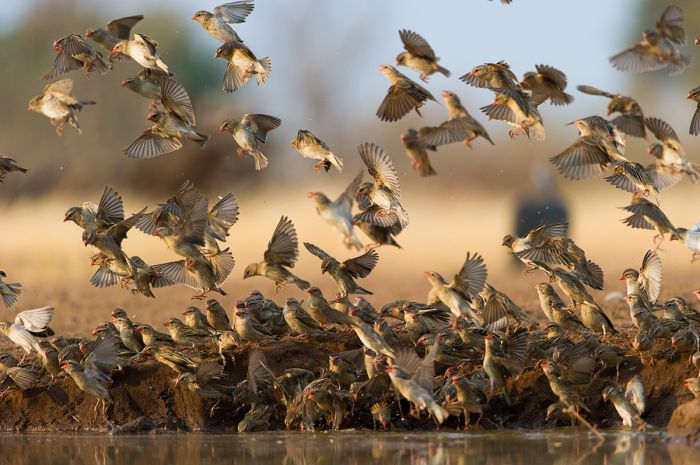
Red-billed queleas drinking at a waterhole in Mashatu
By 1986, many more conservation-minded landowners had joined the association and the new Northern Tuli Conservation Association was formed, with the purpose of conserving wildlife, and all hunting ceased by 1987. Today there are thirty-six member properties that make up the Northern Tuli Game Reserve.
Much of the area's mammalian fauna have since recovered, but some species did not return, including the white rhino, African wild dog, roan, sable, gemsbok (oryx), buffalo, tsessebe, reedbuck, and giraffe. Giraffes and wild dogs were reintroduced to the reserve in 1984 and 2008, respectively. However the wild dog population has suffered severe human persecution and there are no resident packs in the reserve.
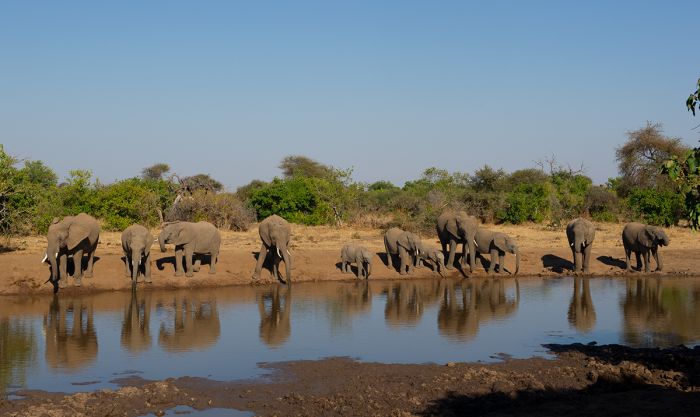
Elephants drinking at Mashatu (Copyright © James Weis)
Wildlife tourism is the focus and the land is organized into several sub-reserves including the Mashatu Game Reserve and several other small private reserves covering 281 square miles (728 sq kms).
The reserves are part of the greater Limpopo River drainage, which flows to the east and is fed by two major feeder rivers, the Shashe and the Motloutse. The Shashe forms the border on the east with Zimbabwe and the Limpopo forms the boundary on the south with South Africa. The Motloutse flows through the western side of the reserve.
Both the Shashe and Motloutse are seasonal sand rivers, but have deep pools of permanent water for most of the year, while the Limpopo flows to varying degrees all year.
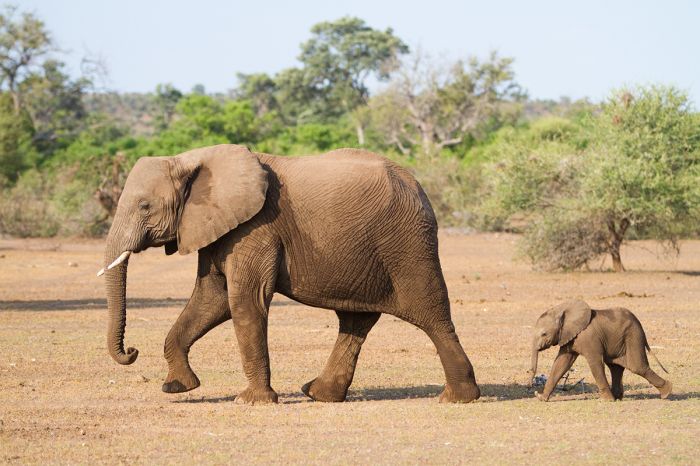
An elephant and her calf in Mashatu Game Reserve
Horseback Safaris
Several operators offer horseback riding in Northern Tuli Game Reserve. These are generally multi-day safaris where guests explore and see wildlife on horseback during the day and overnight at various lodges and camps in the reserve.
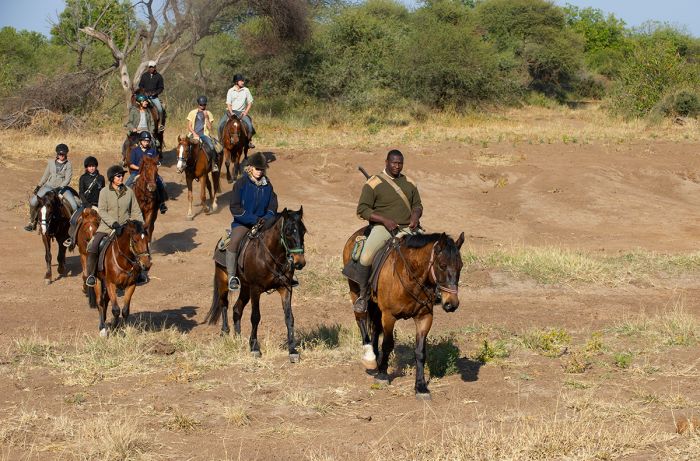
Horseback safari in Mashatu Game Reserve (Copyright © James Weis)
Wildlife
Tuli is sometimes called the 'Land of Giants', for it concentrations of elephant, lion, eland (world's largest antelope), giraffe, and ostrich (world's largest bird). There are some giant trees in Northern Tuli as well, including the iconic baobab and the Mashatu (or nyalaberry) tree.
Elephants are a speciality in Tuli and the reserve has the largest population of elephants on privately-owned land in Africa.
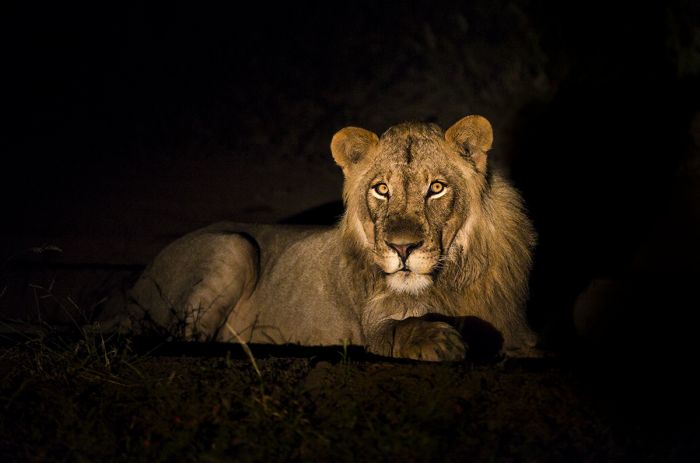
Lion seen on night drive at Mashatu
The reserve has healthy populations of lion, leopard and cheetah and all are seen frequently. Other predators include caracal, African wild cat, serval, bat-eared fox, honey badger, spotted hyena and black-backed jackal. Crocodiles are sometimes seen in the permanent pools in the Limpopo river.
Commonly seen herbivores include giraffe, eland, greater kudu, zebra, wildebeest, impala, waterbuck, steenbok, warthog, klipspringer, common duiker, and bushbuck. There are troops of vervet monkey and baboon along the rivers.
Bird watchers will have great success in the reserve, with over 350 species recorded, including the world's heaviest flying bird, the kori bustard.
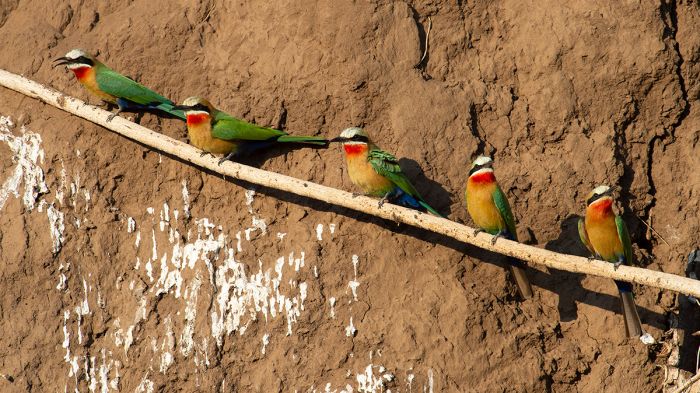
White-fronted bee-eaters nesting in river bank (Copyright © James Weis)
Read More...
History, Horseback Safaris, Mashatu, Northern Tuli Game Reserve, Tuli Block, Tuli Circle, Wildlife
Great Good Fair Poor
- Jan
- Feb
- Mar
- Apr
- May
- Jun
- Jul
- Aug
- Sep
- Oct
- Nov
- Dec
Northern Tuli has a semi-arid climate and other than the Limpopo River, there are very few permanent sources of water here. The Shashe and Motloutse are tributaries of the Limpopo, and flow in the summer, but during the winter are mostly dry, with only isolated pools of water along their courses.
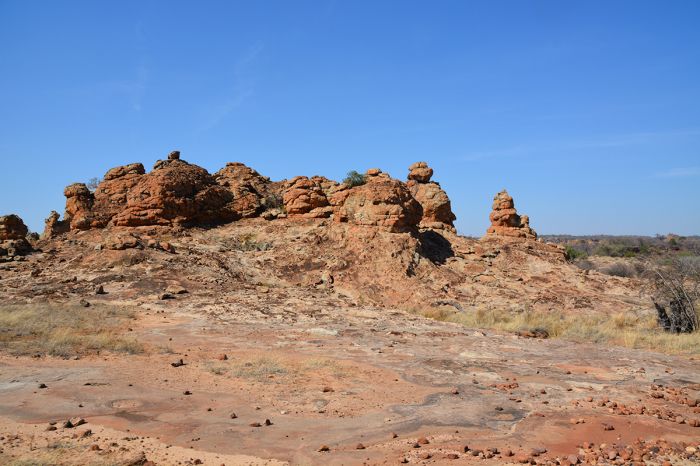
Typical rocky outcrop in Northern Tuli
Numerous small feeder rivers here are non-perennial and flow only sporadically for a few hours or days after rain storms during the summer. There are also some pump-fed waterholes in the reserve.
Game viewing in the Tuli is good all year, but best in the dry, winter months from May thru September.
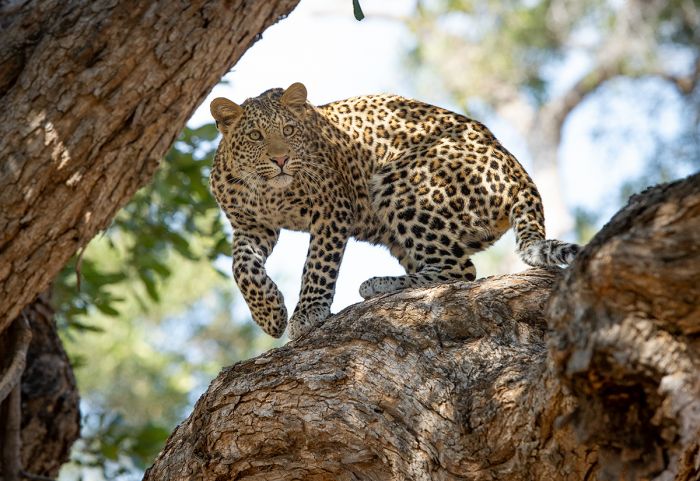
A leopard exploring a tree at Mashatu (Copyright © James Weis)
SUMMER
Rainfall is generally low and occurs during the summer months, primarily between November and March and typically as afternoon thunderstorms and localized showers. Widespread soaking rains can occur, but are uncommon except in wetter years.
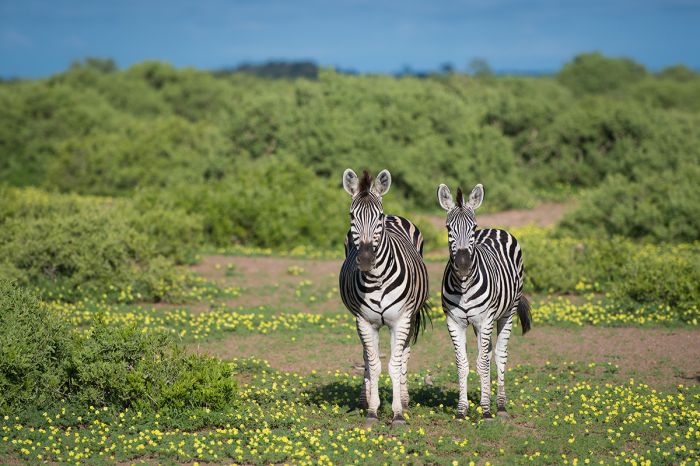
Zebras in lush green Tuli landscape during the summer
Temps during the summer can be very hot but with low humidity. October and November are at the end of the long dry season and some early rains are possible. Mornings are comfortable averaging 64°F (18°C) and reaching 91°F (33°C) by mid-afternoon.
December thru February can be very hot, with peaks reaching 113°F (45°C ) but early mornings are still comfortable at around 70°F (21°C). Thunderstorms bring relief on most days during the afternoon.
March and April experience cooling temps, with afternoons reaching 86°F (30°C) and cooler mornings around 63°F (17°C). Rains are on their way out, but some sporadic showers are still possible.
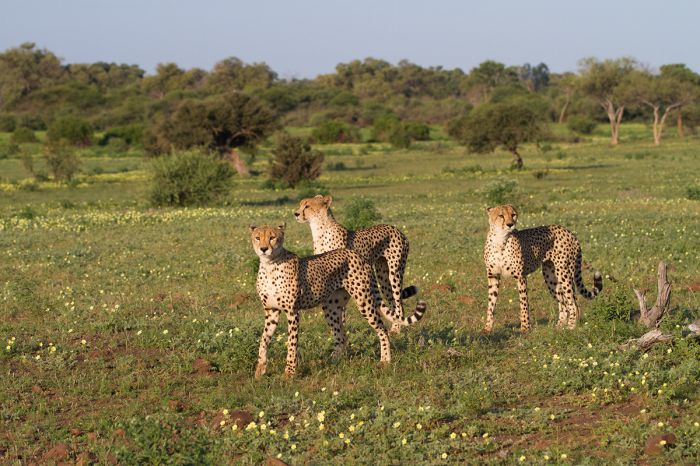
Cheetahs and summer landscape in Mashatu Reserve
WINTER
The winter is the dry season and early mornings on game drive can be chilly. By May, the rains have ended and temps range between 48°F (9°C) in the morning to around 81°F (27°C) during the day.
June thru August are the coldest, with very chilly mornings at around 43°F (6°C) and daily highs around 79°F (26°C).
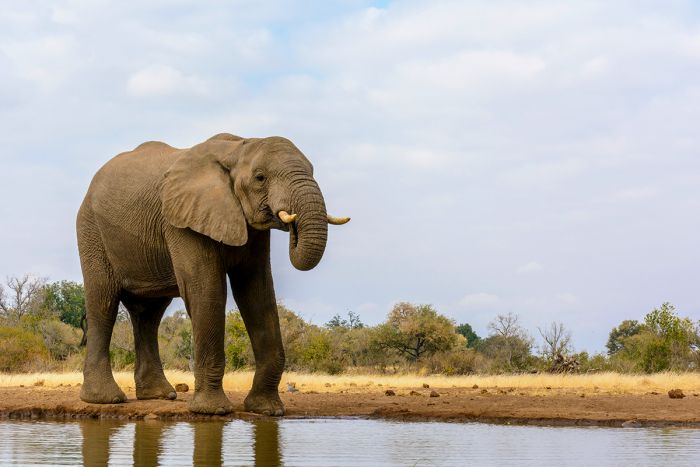
Elephant drinking at the Mashatu hide, Northern Tuli
September marks the end of the dry season and may be the best month overall, with slightly warmer temps for morning game drives averaging 55°F (13°C) and reaching 88°F (31°C) by mid afternoon. Game viewing is peaking as well, with most waterholes having dried and animals congregating around pumped waterholes or dwindling river pools.




